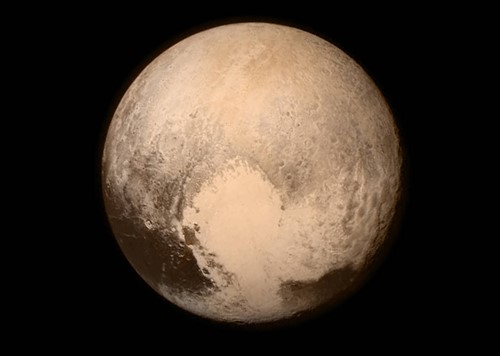-
Tips for becoming a good boxer - November 6, 2020
-
7 expert tips for making your hens night a memorable one - November 6, 2020
-
5 reasons to host your Christmas party on a cruise boat - November 6, 2020
-
What to do when you’re charged with a crime - November 6, 2020
-
Should you get one or multiple dogs? Here’s all you need to know - November 3, 2020
-
A Guide: How to Build Your Very Own Magic Mirror - February 14, 2019
-
Our Top Inspirational Baseball Stars - November 24, 2018
-
Five Tech Tools That Will Help You Turn Your Blog into a Business - November 24, 2018
-
How to Indulge on Vacation without Expanding Your Waist - November 9, 2018
-
5 Strategies for Businesses to Appeal to Today’s Increasingly Mobile-Crazed Customers - November 9, 2018
NASA releases new images from Pluto mission
Indications put Pluto at 2,370 kilometers (1,473 miles) in diameter; bigger than previous estimations. The spacecraft had stopped transmitting to mission control as it had turned its antennas towards the dwarf planet to gather data during yesterday’s flyby.
Advertisement
“This is one of the youngest surfaces we’ve ever seen in the solar system”, said Jeff Moore of the New Horizons Geology, Geophysics and Imaging Team (GGI). Instead of the moon orbiting around the dwarf planet, Charon and Pluto orbit around a center of gravity between the two bodies.
NASA has released the next batch of images from New Horizons’ historic Pluto flyby – and this group is mesmerizing, especially the discovery of mountains. “So even before the composition team tells us that they found places where the nitrogen veneer has been eroded or scraped off, and we see water ice on Pluto for the first time, we can be very sure that the water is there in great abundance”.
That was borne out by a lack of a single impact crater on the surface in the image, the scientist said.
The first ever closeup images of region near Pluto’s equator reveal a youthful mountains rising as high as 11,000 feet (3,500 meters) above the surface of the icy body. Few craters are visible in the image, which shows an area of about 240 miles from top to bottom. Part of the reason is that the probe continues to do science, observing Pluto from its night side.
These results could come as soon as Friday, although it is expected that months will pass before scientists receive the full amount of data from New Horizons in order to get a complete picture of the planet.
Just hours after the NASA New Horizons probe whizzed past Pluto and its moons on Tuesday, new data already began revealing intriguing details about the dwarf planet.
Only in the 1990s did scientists discover the first of what are now known to be thousands of other objects in the Kuiper Belt, a ring of rocky satellites orbiting the Sun at the outer edge of the solar system.
Some other process must be generating the mountainous landscape, NASA said in a statement.
Pluto (left) and its moon, Charon, (right) in false color.
Advertisement
“It is going to send a lot of geophysicists back to the drawing board”, Stern said at a briefing held Wednesday at the Johns Hopkins Applied Physics Laboratory in Maryland.





























